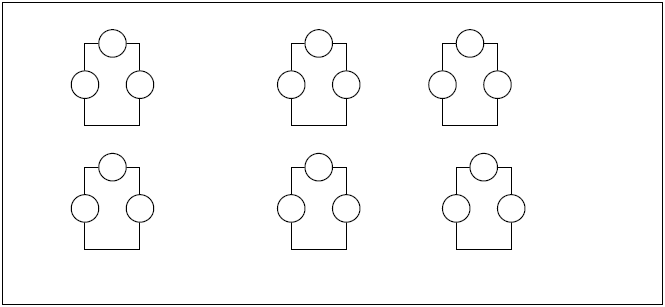Introduction to Division
North Carolina Standard Course of Study Objectives:
Objective 1.02 Develop fluency with multiplication and division :
• Strategies for multiplying and dividing numbers .
Objectives:
The students will be able to:
• Interpret the meaning for basic division facts
• Create multiple representations for basic division facts
Materials:
• Overhead projector
• Base-ten blocks for the overhead
• Base-ten blocks for each student or each group of students
• “What is division?” prompt worksheet
• Folders for each students to keep their portfolio work in
• Page 16 of Division of Larger Numbers transparency
• HW = page 7 of How to Divide
Teacher Input:
The teacher will first explain that students are beginning a unit on division
and tell them
that they will be creating a portfolio over the next month of many different
projects that
they will do for the unit. She will explain that portfolios are a great way not
only for the
teacher to see a student’s strengths and weaknesses, but for the student to
reflect on their
own understanding. She will also tell them that the portfolio will be a big
grade this
quarter so they need to put a lot of thought and effort into their work. Next,
she will
explain that they will be doing something today that will be the first thing
they need to
put in their portfolio. She will pass out the folders for each student and ask
them to write
their names on them. She will explain that they will be keeping all of their
portfolio work
in this folder until it is time to put everything together. Then she will hand
out the “what
is division?” prompt. She will tell students that they need to think back to
third grade and
write down everything they know about division. They can use pictures, words,
and
numbers to explain their thinking. They will also be filling out this prompt at
the end of
the unit as well so they can see how much more they know about division after a
month
as gone by. The teacher will give the students ten minutes to think about and
write down
their answers.
Guided Practice:
After the teacher has students place their prompts in the folders and collects
them, she
will explain to students that they are going to review basic division facts
today. Basic
division facts are the starting point for all bigger division problems and
students need to
understand their meaning before they can begin to work on long division
problems.
The teacher will start by writing the following division problem on the
overhead: 18/3=6.
She will explain to them that every mathematical problem means something and
this one
does too. For example, the addition problem 7+6=13 means that you have seven of
something and you add six more to have a total of thirteen. In multiplication,
the
problem 5x4=20 means that there are four equal groups of five to have a total of
twenty.
She will show each of these problems on the overhead using base ten blocks. She
will
have students talk to their groups about what they think this problem means.
Groups will
share their answers and create a list together. The teacher will tell students
that it does
actually mean you have eighteen of something and you divide it into three equal
groups
to find that there are six in each group. She will demonstrate this with the
base-ten
blocks and ask students to do the same in their groups. She will then put
another problem
up for students: 8/4=2. She will ask if anyone can share the meaning of this
problem and
then ask students to show this problem using their manipulatives. She will model
on the
overhead what each student’s manipulatives should look like .
She will then explain that division comes in handy for everyday life as well.
Using the
following problem, she will use students to help her solve . “Ms. L is setting up
her
classroom for the first day of school. She has a total of eighteen students and
wants to
have three students in each group. How many groups should she have?” She will
have
students get out of their seats and act this problem out to show how we need
division in
our real lives . Students will then draw a picture of the classroom in their math
journals
and show how she should set it up based on their answer to the word problem when
they
were acting it out. Student drawing should look something like this :

Independent Practice:
The teacher will then put up word problems on the overhead for students to work
on.
They will use manipulatives to show the meaning of each division problem and
draw a
picture of the manipulatives in their journal. Their answers should be in a
complete
sentence to demonstrate the understanding of the meaning of division.
Here is an example of what a problem 1 should look like:

There are thirty-six songs in total being played over four
hours so there are nine songs
played each hour.
Closure:
The teacher will ask students to share with their groups something they learned
today
about division. After one minute, she will reconvene and ask each group to share
what
their group discussed. She will explain again the importance of knowing basic
division
facts and also the meaning of division.
Assessment:
The teacher can informally assess students through observation throughout the
lesson.
She can formally assess students through their answers of the division prompt to
gauge
where each student’s understanding lies.
Multilevel Instruction:
The teacher is able to provide multilevel instruction because there is a lot of
modeling in
this lesson. The teacher is also reaching multiple levels of Gardner’s multiple
intelligences because she is having students visually see the problems, act out
a problem,
and explain problems. She will also be able to scaffold students by walking
around
during independent practice.
| Prev | Next |